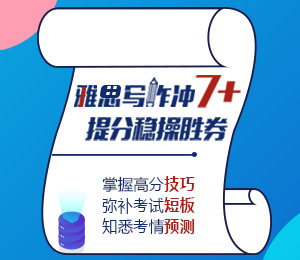解读雅思听力多选题出题思路
2016-07-05编辑: 环球雅思来自:
雅思听力多选题和单选题一样都是雅思听力考试中最传统的题型之一,多选题在审题的时候需要处理更多的选项信息,所以这就对考生分析能力的要求比较高。
在身体的时候要对题干和选项进行全面的分析,题干主要有定位的作用,告诉考生文章的发展方向。常见的题目有:
Include/not include
Dos/don’ts
Advantages/ disadvantages
Types/skills/topics/problems/reasons/results/requirements

除此之外,题干中的其他成分还能提示考生如何区分正确的答案,特别是题干中的时间状语以及地点状语。同义替换是雅思听力选择题的核心考点,例如下面的例子:
比如剑4 Test2 Section3的第25、26两题:
What TWO disadvantages of the questionnaire form of data collection do the students discuss?
A. the data is sometimes invalid
B. Too few people may respond-
C. It is less likely to reveal the unexpected
D. In can only be used with literate populations
E. There is a delay between the distribution and return of questionnaire
原文:
ROSA: No, I’m sure it talked drawbacks as well, didn’t it? Something about the response rate and the problems you get if it’s too low.
MICK: Yeah, but we only need data from five subjects anyway..
ROSA: I suppose so. Another drawback I remember it mentioned was that questionnaire data tends not to reveal anything unexpected (C), because it is……
我们不难发现,问题当中的disadvantage这个词,换成了drawback, 还有选项B中的few替换成了too low。这些同义替换都是最基本的近义词、同义词间的互换。
雅思听力多选题是近年来频率出现较高的一种题型,在考试中所占的比例也比较高,所以考生们一定不要忽略此类题型。
热门推荐:

相关阅读

-
预约雅思水平在线测试
获取0元体验课程












